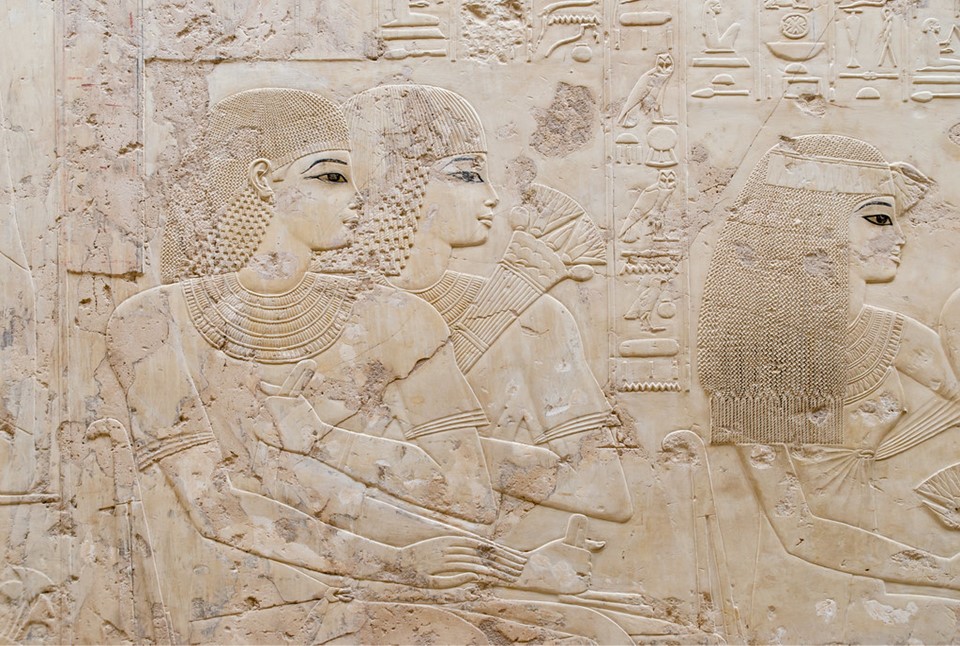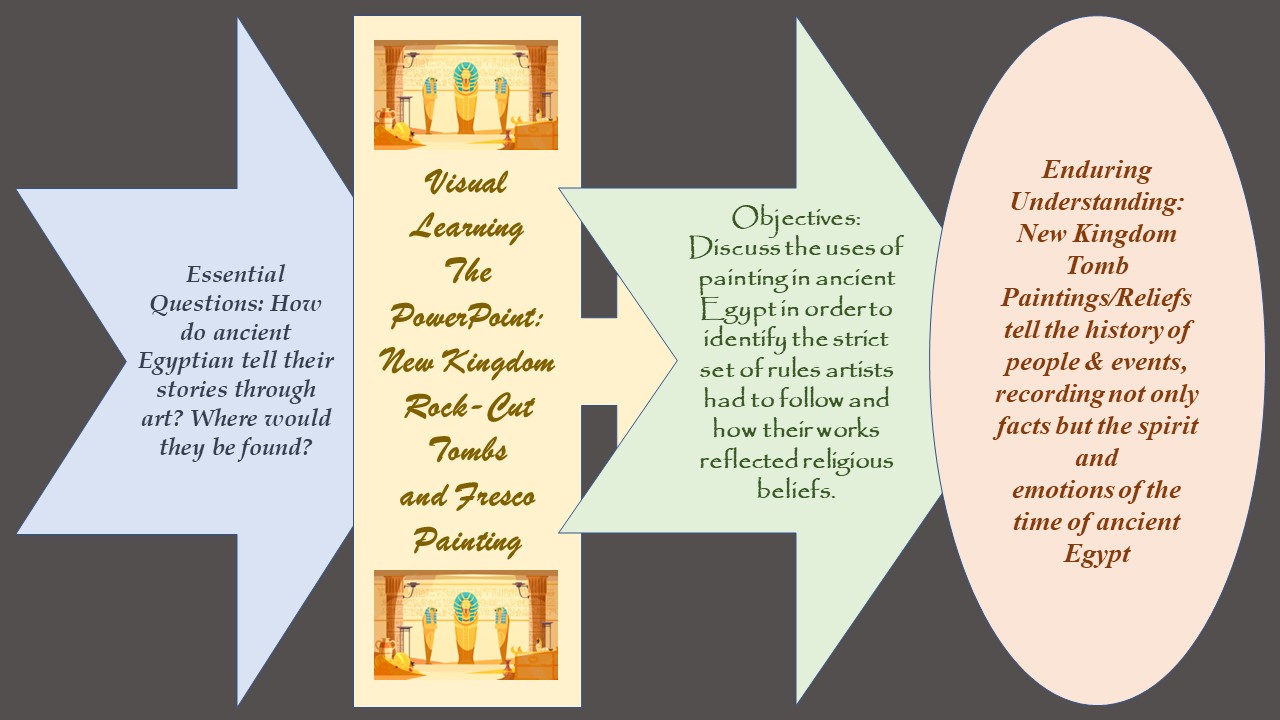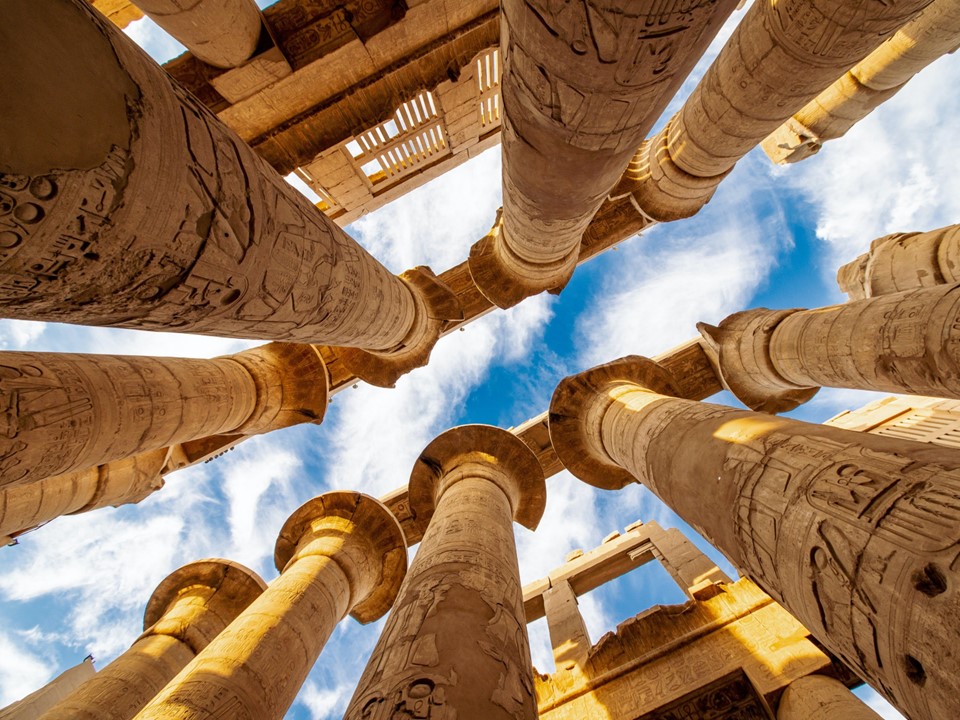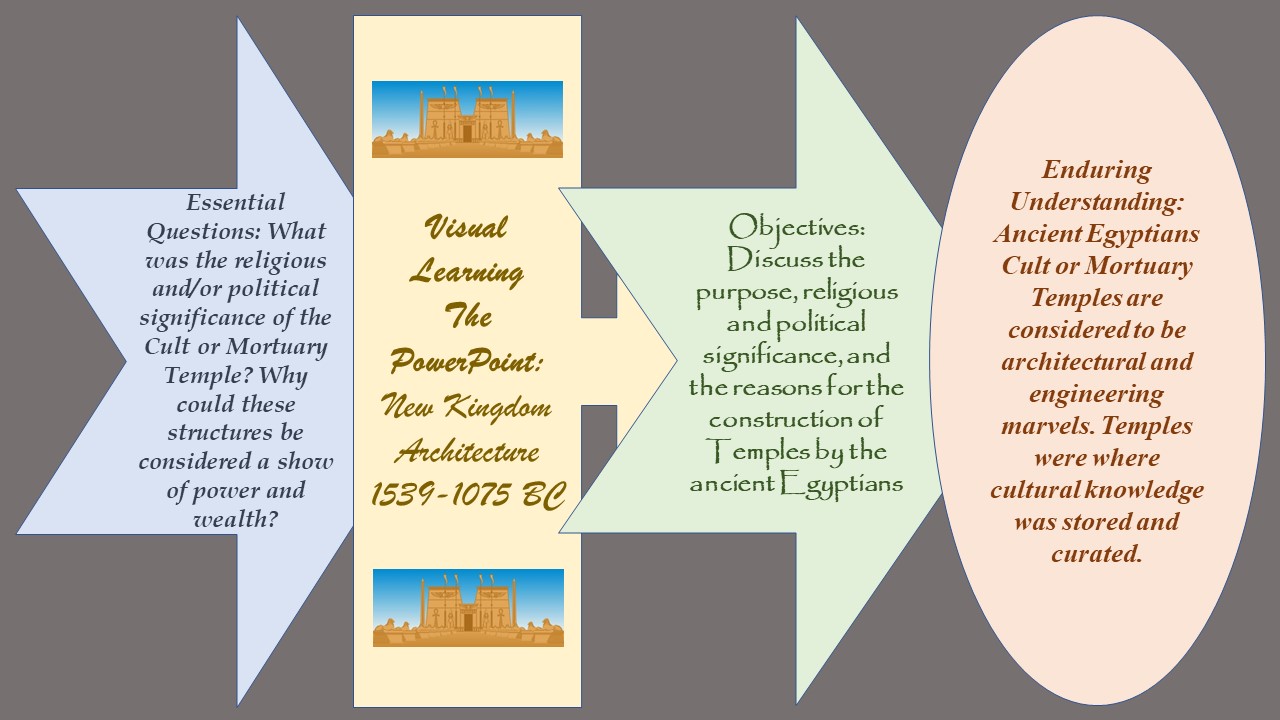
Digital Egypt for Universities site experts ( https://www.ucl.ac.uk/museums-static/digitalegypt/thebes/tombs/index.html ) discussing their Unit on Thebes, some tombs of the New Kingdom (about 1550-1069 BC) write… The typical (elite) Theban tomb type is the rock-cut tomb. Several hundred were cut into the rock on the west of the city. These tombs consist of two main parts. There is the underground burial chamber, most often undecorated and there is the decorated chapel accessible for the living. The chapel was the place for the cult of the dead. The quality of stone is not very good at Thebes, and therefore most of the tomb chapels were plastered and painted rather than decorated with reliefs. My new Lesson Plan on the same subject is titled… The New Kingdom Rock Cut Tombs and, may I add, their amazing interior decoration.
Two PowerPoints, one dedicated to the Tomb of Nebamun, and the other to six incredible New Kingdom Tombs of importance and beauty, will assist us in further understanding the ‘secrets’ of Egyptian art. To access the two PowerPoints, please… Click HERE! and HERE!
I use the 4-Steps to Success ‘grid’ to organize my presentation… and focus on what the Enduring Understanding of this presentation will be… New Kingdom Tomb Paintings/Reliefs tell the history of people & events, recording not only facts but the spirit and emotions of the time of ancient Egypt.

The New Kingdom was Egypt’s Golden Age, as years of stability within its boundaries, on one hand, diplomacy, trade, and war, on the other, brought immense prosperity and political power. Money poured into Egypt from its foreign lands, particularly Nubia, home to the richest gold mines in the ancient world. Much of this money was used by the pharaohs and their administrators to give thanks to the gods who had helped them in their success. The New Kingdom became one of the most creative periods in Egyptian history and the wall paintings or relief carvings in the Theban Rock Cut Tombs, are an example of their extraordinary artistic achievements. https://www.pbs.org/empires/egypt/newkingdom/architecture.html
During the New Kingdom period (ca. 1539 – 1075 BC) the Pharaohs established the new funerary trend of building Rock Cut Tombs in the area across Thebes, the capital of Egypt, on the Western bank, of the river Nile. Building their tombs in what became known as the Theban Valley of the Kings, the Pharaohs were followed, as the tradition was, by their queens, members of their families, and members of their administration. These Tombs were exquisitely decorated with fine paintings or carved reliefs of religious texts that would help the dead successfully navigate their way to the afterlife. Not only so… Tombs of New Kingdom administrators contained idealized images of everyday life that represented the life of the tomb’s occupant and his or her hopes for paradise in the afterlife. https://www.pbs.org/empires/egypt/newkingdom/architecture.html
For the New Kingdom Timeline, please… Check HERE!
Enjoy a National Geographic Documentary titled Egypt Eternal: The Quest for Lost Tombs (2002)… https://www.youtube.com/watch?v=IgWbZvMSCGM
Another Video about Egyptian Art History from Goodbye-Art Academy… https://www.youtube.com/watch?v=ibp_i7bekQU
A Khan Academy Video on the Ancient Thebes with its Necropolis… https://www.khanacademy.org/humanities/ap-art-history/ancient-mediterranean-ap/ancient-egypt-ap/v/ancient-thebes-unescotbs

